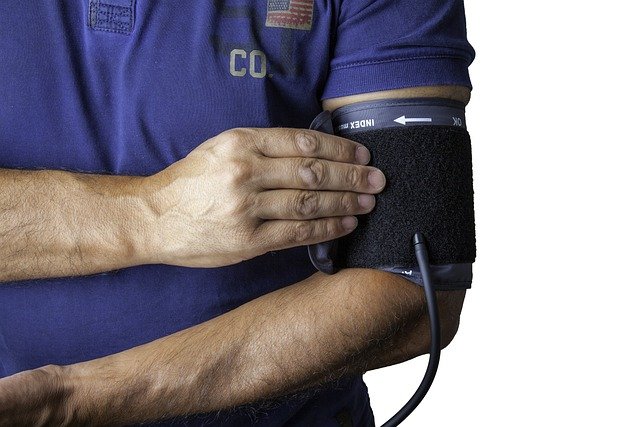Heart Disease in Women: Recognize the Risks and Take Control of Your Heart Health
Heart disease is often perceived as a predominantly male health concern, but it's equally important for women to be aware of their cardiovascular health. In fact, heart disease is the leading cause of death for women in many countries, including Australia. Understanding the unique aspects of heart disease in women, recognizing risk factors, and taking proactive steps towards prevention are crucial for maintaining long-term heart health.

What are the key differences in heart disease between women and men?
While heart disease affects both genders, there are notable differences in how it manifests in women. Women may experience different symptoms compared to men, which can sometimes lead to delayed diagnosis. For instance, women are more likely to report symptoms such as fatigue, shortness of breath, and nausea, rather than the classic chest pain often associated with heart attacks. Additionally, women tend to develop heart disease about 10 years later than men, often after menopause when the protective effects of estrogen diminish.
What are the primary risk factors for heart disease in women?
Several factors contribute to an increased risk of heart disease in women. Some of these are shared with men, while others are unique to women:
-
High blood pressure and high cholesterol levels
-
Smoking and excessive alcohol consumption
-
Obesity and physical inactivity
-
Diabetes
-
Family history of heart disease
-
Stress and depression
-
Pregnancy complications such as preeclampsia or gestational diabetes
-
Menopause and hormonal changes
It’s important for women to be aware of these risk factors and discuss them with their healthcare providers to assess their individual risk profile.
How can women recognize the warning signs of heart disease?
Recognizing the warning signs of heart disease is crucial for early intervention. Women should be alert to the following symptoms:
-
Chest discomfort or pain, which may feel like pressure, squeezing, or fullness
-
Pain or discomfort in one or both arms, back, neck, jaw, or stomach
-
Shortness of breath, with or without chest discomfort
-
Cold sweats, nausea, or lightheadedness
-
Extreme fatigue
-
Irregular heartbeat or palpitations
It’s important to note that these symptoms can be more subtle in women and may occur during rest or sleep. If you experience any of these symptoms, especially if they are severe or persistent, seek medical attention immediately.
What steps can women take to prevent and manage heart disease risk?
Prevention and management of heart disease risk involve lifestyle changes and regular medical check-ups. Here are some key steps women can take:
-
Maintain a healthy diet rich in fruits, vegetables, whole grains, and lean proteins
-
Engage in regular physical activity, aiming for at least 150 minutes of moderate-intensity exercise per week
-
Quit smoking and limit alcohol consumption
-
Manage stress through relaxation techniques, meditation, or counseling
-
Control other health conditions such as diabetes, high blood pressure, and high cholesterol
-
Maintain a healthy weight
-
Get regular check-ups and screenings, including blood pressure, cholesterol, and diabetes tests
-
Discuss hormone therapy and its potential risks and benefits with a healthcare provider, especially for postmenopausal women
What treatment options are available for women with heart disease?
Treatment for heart disease in women may include a combination of lifestyle changes, medications, and medical procedures. The specific treatment plan depends on the type and severity of the condition, as well as individual risk factors.
Common treatment options include:
-
Medications to control blood pressure, cholesterol, and other risk factors
-
Lifestyle modifications, including diet and exercise programs
-
Cardiac rehabilitation programs
-
Minimally invasive procedures such as angioplasty and stenting
-
Surgical interventions like coronary artery bypass grafting (CABG) for severe cases
It’s crucial for women to work closely with their healthcare providers to develop a personalized treatment plan that addresses their specific needs and risk factors.
| Treatment Option | Description | Typical Cost Range (AUD) |
|---|---|---|
| Medications | Blood pressure and cholesterol-lowering drugs | $20 - $200 per month |
| Cardiac Rehabilitation | Supervised exercise and education programs | $500 - $3,000 for a complete program |
| Angioplasty with Stenting | Minimally invasive procedure to open blocked arteries | $15,000 - $30,000 |
| Coronary Artery Bypass Grafting (CABG) | Major surgery to improve blood flow to the heart | $30,000 - $70,000 |
Prices, rates, or cost estimates mentioned in this article are based on the latest available information but may change over time. Independent research is advised before making financial decisions.
Understanding heart disease in women is crucial for effective prevention, early detection, and treatment. By recognizing the unique risk factors and symptoms, women can take proactive steps to maintain their heart health. Regular check-ups, a heart-healthy lifestyle, and prompt attention to warning signs are key components of managing cardiovascular health. With the right knowledge and approach, women can significantly reduce their risk of heart disease and improve their overall quality of life.
This article is for informational purposes only and should not be considered medical advice. Please consult a qualified healthcare professional for personalized guidance and treatment.




